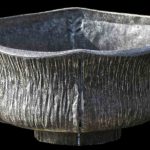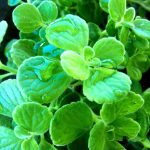The USDA Plant Database is an invaluable online resource for learning about plants. It provides standard information about all vascular, moss, liverwort, and hornwort species in the United States, making this database invaluable to land conservation efforts and academic studies. Furthermore, this resource is constantly being updated with more data.
NRCS
NRCS assists farmers and ranchers in conserving natural resources such as soil, water, air quality, and wildlife habitat; adapting to new challenges like climate change; implementing conservation practices on their lands through private landowners, local governments, state agencies, tribes, and volunteers implementing conservation practices; as well as offering technical and financial support through programs authorized by Farm Bill programs.
Established in 1935 as the Soil Conservation Service (SCS), Congress passed legislation following dust storms of the 1930s to address cropland wastage and to create an agency dedicated to conservation. Subsequently, in 1994, it was changed to Natural Resources Conservation Service, reflecting its mission of natural resource preservation.
NRCS’ primary mission is implementing and supporting agricultural conservation practices across the nation, particularly those designed to reduce nutrient runoff, soil loss, and water use/loss, as well as increase grazing capacity and wildlife habitat while improving water quality and supporting rural economic development. Furthermore, this program offers targeted funding support to farmers affected by natural phenomena.
The Natural Resource Conservation Service (NRCS) has introduced several national and regional initiatives to assist farmers better. One is the Web Soil Survey – an online tool with detailed soil information for 95% of counties – while they’ve also established an expansive plant materials program that selects and develops planting technology to address national priorities such as soil health and wildlife habitat protection.
NRCS has extensively researched and developed innovative and cost-effective conservation solutions. For instance, they have leveraged geospatial information to enhance erosion prediction models, using satellite imagery to evaluate soil health in field locations. Furthermore, they have devised a system for measuring the effects of conservation practices on wetlands and contributing towards producing a manual that emphasizes vegetative rather than structural restoration of stream corridors.
NRCS is an expansive and expansive organization. Comprised of several divisions, institutes, and centers that deal with various issues – Soil Survey and Resource Assessment sets research priorities; the Science and Technology Office oversees 25 plant materials centers and provides technical leadership on national issues – the organization offers technical leadership on various matters.
National Plant Database (NPD)
The National Plant Database (NPD) is an aggregate of information on trees, shrubs, flowers, grasses, and sedges for use in landscaping, wildlife habitat, and other ecological applications. Users can access it from any internet-enabled device – mobile included! – and view in various formats, including text-only images and full-color ones. It holds over 50,000 plant records from 400 state and federal agencies, universities, botanical gardens conservation organizations, and other institutions and is updated as new data becomes available.
As well as traditional databases, the NPD also features several innovative applications, such as a native plant species finder and the Grow Native! Committee’s Top Ten Native Plant Picks. It can support conservation and land management decisions made by professionals, amateur plant enthusiasts, and general members of society.
Completed the restructuring of the Image Gallery and NPIN search pages. NPIN now supports universal combo searches across Recommended Species, Name, and Family search results; enhanced map of National Suppliers Directory to plot both suppliers and associate suppliers; universally increased thumbnail size to 160×120 for all images on NPIN; expanded photo tracker for wildflower seedling recognition project which documents all stages from birth through death of seedlings sent from mail order companies; added second Melody Lytle image contribution to Image Gallery; linked images to bibliographie titles in Mr. Smarty Plants; added geo-search capabilities to Organizations Directory as well as suppliers Directories respectively.
National Database of Plant Varieties (NDPV)
PLANTS database offers standardized information about the vascular plants, mosses, liverworts, hornworts, and lichens of the United States and its territories. It provides names, plant symbols, checklists, distributional data, species abstracts, characteristics, automated tools, crop information images, and onward Web link references intended primarily to promote land conservation but available for academic, commercial, or general purposes as well.
The USDA National Plant Germplasm System (NPGS) contains an expansive collection of genetically distinct, cultivated, and non-cultivated plants from diverse habitats. Its mission is to make this valuable resource accessible to plant communities worldwide. Scientists using this database can search plants by their characteristics, quickly locating what plants best suit their applications by common name or scientific name search filters and geographic region selection criteria.
NPS-DEP Plant Inventory Database provides another invaluable resource. This searchable database features information on plants and vegetation within the National Park System, helping managers plan for and manage natural resources in these parks more effectively. Best of all, its use is free with regular updates!
The National Plant Monitoring Survey uses this database to track the status of plants and habitats across the U.S. It contains detailed information about all of the organisms living within each ecosystem, as well as data on invasive species; it serves as the most complete source for such data in America; in addition, volunteers take photographs for this collection of images throughout their travels around the nation.



